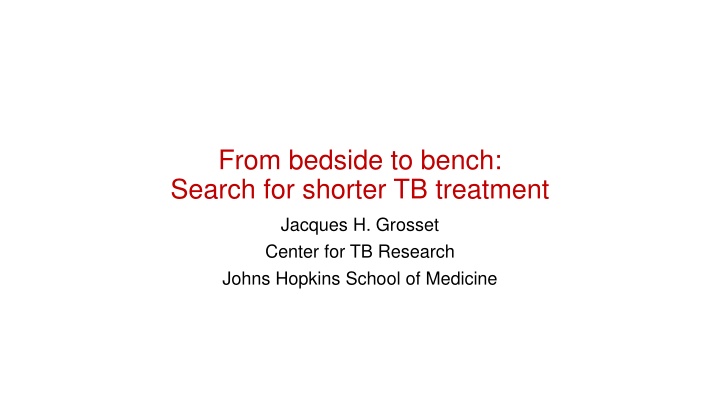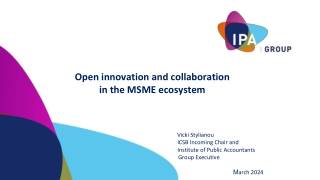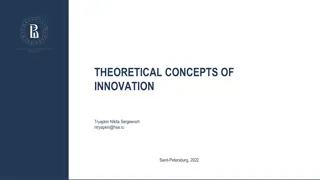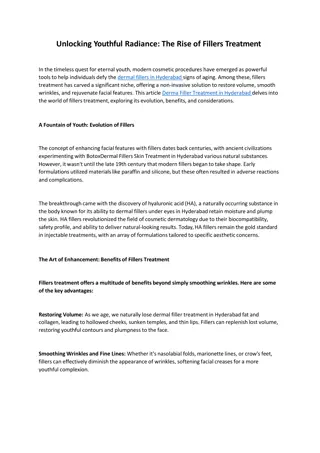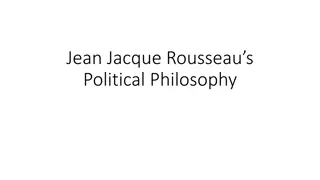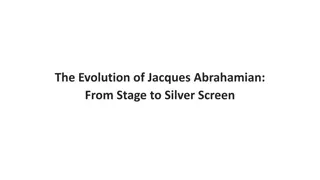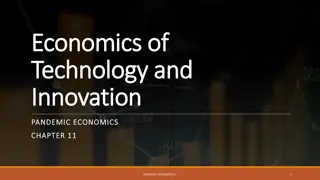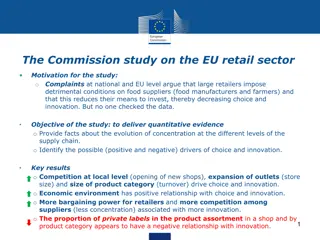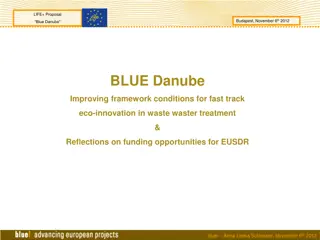The Journey of TB Treatment Innovation by Jacques H. Grosset
Jacques H. Grosset, a pioneer in the field of tuberculosis research, shares his personal journey from being a TB patient to a researcher seeking shorter treatment options. The narrative unfolds from his time at a sanatorium in France to his research endeavors at Johns Hopkins School of Medicine and the Pasteur Institute. His experiences highlight the challenges and triumphs in the quest for better TB treatments, including his survival despite resistant strains and pulmonary resection. Grosset's story underscores the importance of bridging the gap between clinical practice and scientific research in the fight against TB.
Download Presentation

Please find below an Image/Link to download the presentation.
The content on the website is provided AS IS for your information and personal use only. It may not be sold, licensed, or shared on other websites without obtaining consent from the author.If you encounter any issues during the download, it is possible that the publisher has removed the file from their server.
You are allowed to download the files provided on this website for personal or commercial use, subject to the condition that they are used lawfully. All files are the property of their respective owners.
The content on the website is provided AS IS for your information and personal use only. It may not be sold, licensed, or shared on other websites without obtaining consent from the author.
E N D
Presentation Transcript
From bedside to bench: Search for shorter TB treatment Jacques H. Grosset Center for TB Research Johns Hopkins School of Medicine
Why not from the bench to the bedside? Because It is how it began for me (cough with blood ) It is how I became really interested in TB It is how I became deeply interested in the cure of TB
Welcome to the sanatorium at St-Hilaire-du-Touvet, France on July 15, 1954 To the patient with pulmonary TB (myself), the medical director said: You should fully realize, and the sooner the better, that Your future is behind you If you survive , you will just be able to work part time!
Enjoyment at St-Hilaire-du Touvet I survived in spite or because of Total bed rest for 9 months! Resistance of my tubercle bacilli to streptomycin and isoniazid (I was a MDR-TB precursor!) Pulmonary resection on Jan 21, 1955
My mentor Georges Canetti 1911-1971 Fall of 1955: Why not come and do research with me at the Pasteur Institute to get your revenge?
History of TB antibiotic treatment (1) First step in the 1940s.. Prevention of death The discovery of streptomycin by Schatz, Bugie and Waksman in 1944, at Rutgers, NJ. opened the door to TB treatment with antibiotic: - Only 7% of streptomycin (2g/day) + bed-rest treated patients died before the end of six months vs 27% of bed-rest only treated patients (BMRC 1948). - However bacilli of 80% of patients treated with streptomycin became resistant to streptomycin! Second step in the 1950s.. Prevention of acquired drug resistance The discovery of para-amino-salicylic acid or PAS (1946) and isoniazid (1952) was decisive: combining streptomycin with PAS and isoniazid prevented the development of resistance to streptomycin and isoniazid. Third step in the 1960s.. The time needed to obtained stable culture conversion = The cure of TB All conducted clinical trials concluded that 18-24 months of treatment with streptomycin (S), isoniazid (H) and PAS (P), abbreviated 3SHP/15 HP, was curing TB but with ~ 10% relapses (MRC. Tubercle 1962;43:201-267). stable culture conversion: 18 months with SHP but ~ 10% relapses
The IUAT trial, 1960 (IUAT Bull. 1964 ; 34 : 82-150) At the end of the fifties, a majority of TB experts were still convinced that once a TB patient, always a TB patient (like a leper ): you can be stabilized but never cured A multi-center (Europe, Asia, America, Africa) study was conducted under the auspices of IUAT among 581 sputum-smear positive patients with pulmonary TB to study the efficacy of 18 months daily treatment with 3SHP*/15HP The results were unambiguous *(S, streptomycin, 1g IM; H, isoniazid, 300mg orally; P, PAS, 10g orally)
Results of the multi-center IUAT trial 1960-61 (IUAT Bull. 1964 ; 34 : 82-150) Patients Number % Included* 581 100 Received the prescribed treatment Did not receive the prescribed treatment Dead 317 54.6** 196 33.7 10 1.8 Lost to follow up 58 9.9 *with organisms fully susceptible to streptomycin, isoniazid, and PAS ** All cured
Two crucial findings 1. All of the patients (n= 317) who received the prescribed regimen were cured (not a single failure!) 2. But almost 50% of the patients did not receive or did not take the prescribed regimen for the full duration, and did not perform as well Conclusion: There is a long way between theory and practice! Implementation (adherence, compliance) in the field is as important as science. The development of XDR-TB, a man-made phenomenon, could have been predicted in the sixties!
The home and sanatorium study (W. Fox. Advances in TB Research 1963; 12:28-149) Up to 1960, the rule was to treat TB in hospitals or sanatorium. At Madras, India, home treatment was tested under the leadership of Wallace Fox: First, a comparison was conducted in patients of home and sanatorium treatment for a period of 12 months - Treatment INH+PAS - Cured at 12 months: 92% (73/81) in sanatorium vs 86% (67/82) at home Second, a study of relapses in patients in a 4-year period of follow-up: - 3 (5%) among home treated patients - 6 (9%) among sanatorium treated patients Third, the incidence of TB in a 5-year period of follow-up was assessed: - 6.2% of the 297 family contacts of home treated patients - 7.1% of 312 family contacts of sanatorium treated patients
Conditions for success of ambulatory treatment of TB (TCC Madras, Bull. Wld. Hlth. Org 1959 22. 51-144; W. Fox. Advances in TB Research 1963; 12:28-149) Adequate supply of drugs Enough staff to supervise the patients Efficient appointment system Adequate transport for ill patients with reserved beds in hospital Organized system for surprise visits and check of drug stock A capable laboratory Unfortunately, the explicit conditions set forth by W. Fox for the success of ambulatory treatment, i.e. the rigorous organization and supervision of antibiotic intake, was then and is still now so overlooked that the percentage of patients who do not take the prescribed treatment may exceed 50%.
History of TB antibiotic treatment (2) First step, in the 1940s.. Prevention of death Second step, in the 195s.. Prevention of acquired drug resistance Third step, in the 1960 s.. The time needed to obtained stable culture conversion = The cure of TB in 18 months (a miracle compared to death of 50% of patients!) Fourth step, in the 1970s.. The cure of TB in 9 months The discovery and introduction of rifampin in 1967 was the cornerstone of shortening the course of TB treatment. Patients were cured in 9 months! stable culture conversion: 18 months with SHP but ~ 10% relapses
8 IN H + SM 7 Log10C F U per lu ng IN H + R IF 6 5 4 3 2 1 0 0 1 2 3 6 9 12 15 18 M on ths of treatm ent Comparative bactericidal activity of isoniazid (INH) + streptomycin (SM) + PAS, and INH+ rifampin (RIF) in mice (and in humans) 20 Grumbach and Rist. RevTub Pneu 1967;31:749-762; BTA Lancet 1976;ii:1102-1104. :
History of TB antibiotic treatment (3) First step, in the 1940s.. Prevention of death Second step, in the 1950s.. Prevention of acquired drug resistance Third step, in the 1960s.. The time needed to obtained stable culture conversion = The cure of TB in 18 months (a miracle compared to death in 50% of patients!) Fourth step, in the 1970s.. The cure of TB in 9 months The discovery and introduction of rifampin (RIF) in 1967 was the cornerstone of shortening the course of TB treatment: Patients were cured in 9 months! Fifth step, in the 1980s.. The cure of TB in 6 months - The anti-tuberculosis activity of pyrazinamide (PZA) was literally rediscovered in 1972 by the East Africa and British Medical Research Councils [Lancet1972;i:1079-1085]. - PZA and RIF have similar potential for shortening the duration of treatment (Tubercle 1975;56:81-96) - Combining RIF and PZA resulted in the cure of patients in 6 months (Br.J.Dis.Chest1984;78:330-336) stable culture conversion: 18 months with SHP but ~ 10% relapses
8 IN H + SM 7 Log10C F U per lu ng IN H + R IF 6 IN H + R IF + P ZA 5 4 3 2 1 0 0 1 2 3 6 9 12 15 18 M on ths of treatm ent Comparative bactericidal activityof INH+SM, INH+RIF, or INH+RIF+PZA in mice (and in humans) 22 BTA. Br J Dis Chest 1984;78:330-336.
The triumph of medicine: The 6-month short- course treatment for tuberculosis In forty years (1940-1980), an infectious disease that was lethal in 50% of the cases was cured by only six months of treatment with oral antibiotics: Rifampin, isoniazid, pyrazinamide, and ethambutol for 2 months + Rifampin and isoniazid for 4 months
The failure of medicine: TB remains one of the world s biggest killers Forms of TB Number of cases Deaths All* 9.6 million (1.2 HIV+) 480,000 (3.5% of the total TB) 43,200 (9.6% of the MDR-TB) 1.5 million 400,000 HIV+ 210,000 MDR-TB** XDR-TB*** ? In the 22 high-burden countries that collectively account for 80% of TB cases * with 86% success rate of treatment (for drug-susceptible, WHO 2013) ** with 48% success rate of treatment *** with 33% success rate of treatment Global TB Report 2015, WHO
What should be done? The facts Each year out of the 9 million new TB cases with drug-susceptible bacilli - more than1,000,000 patients die of TB (1/3 with TB and HIV) - treatment fails in 1,260,000 patients Each year, 480,000 patients acquire MDR-TB The priorities: (i) Stop the hemorrhage of deaths and treatment failures by organizing the cure of every new TB patients (The End TB Strategy, WHO) (ii) Focus more on preventing MDR-TB than on treating MDR-TB (Frieden et al., 1995)
The end TB strategy (WHO) Pillars and Components 1. Integrated, patient-centered care and prevention - Diagnosis of all patients and infected contacts - Cure of all patients and infected contacts. Cure is not synonymous with treat : it means make the treatment available to all in need and have them swallow their medicines from initiation to completion of treatment, i.e., DOT as standard of care (Frieden et al. NEJM 1995) 2. Bold policies and supportive systems - Universal health coverage policy 3. Intensified research and innovation Discovery of new tools (drug, vaccine), interventions and strategies Personal remark: nothing of the above strategy is new; it is just a reminder of the basic rules that allowed North America and Western Europe to control TB for the past 50 years /since the Sixties! -Adequate resources for diagnosis, treatment and prevention.
Current bench research Though the 6-month drug regimen is a wonderful achievement it implies a lot of requirements on the patients and TB control network Develop much shorter TB drug regimens, for example of 3 months duration, would be very beneficial. For that 3 drugs only are potentially available: rifapentine, moxifloxacin and clofazimine.
1. Rifapentine (P) Rifapentine (P) is a long-lived rifamycin derivative Rifapentine offers potential for improved activity because of its superior PK/PD profile: Drug Half life (h) MIC90 ( g/ml) Cmax/MIC* Rifampin (10 mg/kg) Rifapentine (10 mg/kg) 2.46 0.25 60 15.9 0.12 100 **Optimal Cmax/ MIC90: >10
Bactericidal activity of R10HZ & P10HZ 8 R10HZ 7 Log10C F U per lu ng P10HZ 6 5 4 3 2 1 0 0 2 4 8 10 12 W eeks o f treatm en t Conclusion: Negative cultures are obtained much more rapidly (10 weeks) with P10HZ than with weeks with R10HZ.
The current TBTC clinical trial with rifapentine Regimens Duration 2HP1200ZE/2HP1200 2HP1200ZM/2HP1200 2HR10ZE/2HR10 4 months 4 months 6months Endpoints -Time to culture conversion - Relapse rate
2. Moxifloxacin - Fluoroquinolone - MIC range 0.125-0.5 g/ml - Concentration dependent activity - Half life in humans, 10-12h - Inhibits DNA gyrase - As active antimicrobial as isoniazid
Conclusions from recent moxifloxacin trials Moxi improved culture conversion at 2 months 2-month culture conversion surrogate marker was not confirmed to predict 2-month treatment shortening Fluoroquinolones are active against M. tuberculosis, but do not appear to add sterilizing activity The combination of moxi and rifapentine appears to have excellent activity and may contribute to TB treatment shortening
3. Clofazimine (CFZ) o Fat-soluble, phenazine-based dye o Developed in 1950s by Vincent Barry as TB drug o Used in combination therapy for leprosy CFZ for TB treatment o Highly active against M. tuberculosis in vitro and in mice o Associated with tissue accumulation, red discoloration, very long half-life o Initial formulation had poor absorption when orally administered o Lacked sensation compared to streptomycin-isoniazid-para-amino-salicylic acid o Used for MDR-TB as a Group 5 drug: not recommended because its contribution to the efficacy of multidrug regimens is unclear 33
CFZ activity in a second-line regimen in a mouse model of MDR-TB T reatm en t initiation C o n tro l 10 E nd of am ikacin 2AM EZ/7M EZ 2AM EZC/7M EZC Log1 0C F U p er lu n g 8 6 4 2 0 0 1 2 3 4 5 6 7 8 9 M o n th s o f treatm en t CFZ-containing regimen relapse-free cure: 93% after 8 or 9 months of treatment BALB/c mice infected by aerosol with an isoniazid-resistant strain of M. tuberculosis. A: amikacin 100 mg/kg; M: moxifloxacin, 100 mg/kg; E: ethambutol, 100 mg/kg; Z: pyrazinamide, 150 mg/kg; C: clofazimine, 25mg/kg. All drugs were administered by oral gavage, except for amikacin, which was administered by subcutaneous injection. Grosset et al., Am J Resp Crit Care Med 2013; 188: 608-612. 34
Decline of lung CFU counts in mice treated with the first-line regimen with or without clofazimine Treatment initiation 10 8 UT 2RHZE/4RH 2RHZC/2RHC Log10CFU per lung 6 3/5 mice positive with 2, 8 and 19 CFU 4 3/5 mice positive with 2, 6 and 8 CFU 2 0 -4 D0 1 2 4 8 12 16 20 Weeks Tyagi & al., PNAS 2015. 35
The proposed clinical trial with clofazimine Drug regimens: - Control: 2 months of RHZE / 4 months of RH - Test 1: 2 months of RHZE + C50mg /1 month of RH+C50mg followed by 3 months of RH to complete the usual 6-month treatment - Test 2: 2 months of RHZE + C100mg / 1month of RH+C100mg followed by 3 months of RH to complete the usual 6-month treatment Target sample size: 41 participants per arm Endpoints: - Culture conversion at week 12 and - Comparison of culture conversion at week 8, Length of participant follow-up: 24 weeks 36
Conclusion from the bedside to the bench The only benefit of having gone from the bed to the bench is the motivation A huge amount of research work has been done but it is the easiest that has been done, the most difficult remains to come. Implementation in the field is more problematic than pure science in the lab. Please don t believe in dogma, in short-cuts, in easy-going All together and only all together we will control TB Thank you 9/13/2024
